Abstract
Having found evidence for segregation at a major locus for a quantitative trait, a logical next step is to identify those pedigrees in which major-locus segregation is occurring. If the quantitative trait is a risk factor for an associated disease, identifying such segregating pedigrees can be important in classifying families by etiology, in risk assessment, and in suggesting treatment modalities. Identifying segregating pedigrees can also be helpful in selecting pedigrees to include in a subsequent linkage study to map the major locus. Here, we describe a strategy to identify pedigrees segregating at a major locus for a quantitative trait. We apply this pedigree selection strategy to simulated data generated under a major-locus or mixed model with a rare dominant allele and sampled according to one of several fixed-structure or sequential sampling designs. We demonstrate that for the situations considered, the pedigree selection strategy is sensitive and specific and that a linkage study based only on the pedigrees classified as segregating extracts essentially all the linkage information in the entire sample of pedigrees. Our results suggest that for large-scale linkage studies involving many genetic markers, the savings from this strategy can be substantial and that, compared with fixed-structure sampling, sequential sampling of pedigrees can greatly improve the efficiency for linkage analysis of a quantitative trait.
Full text
PDF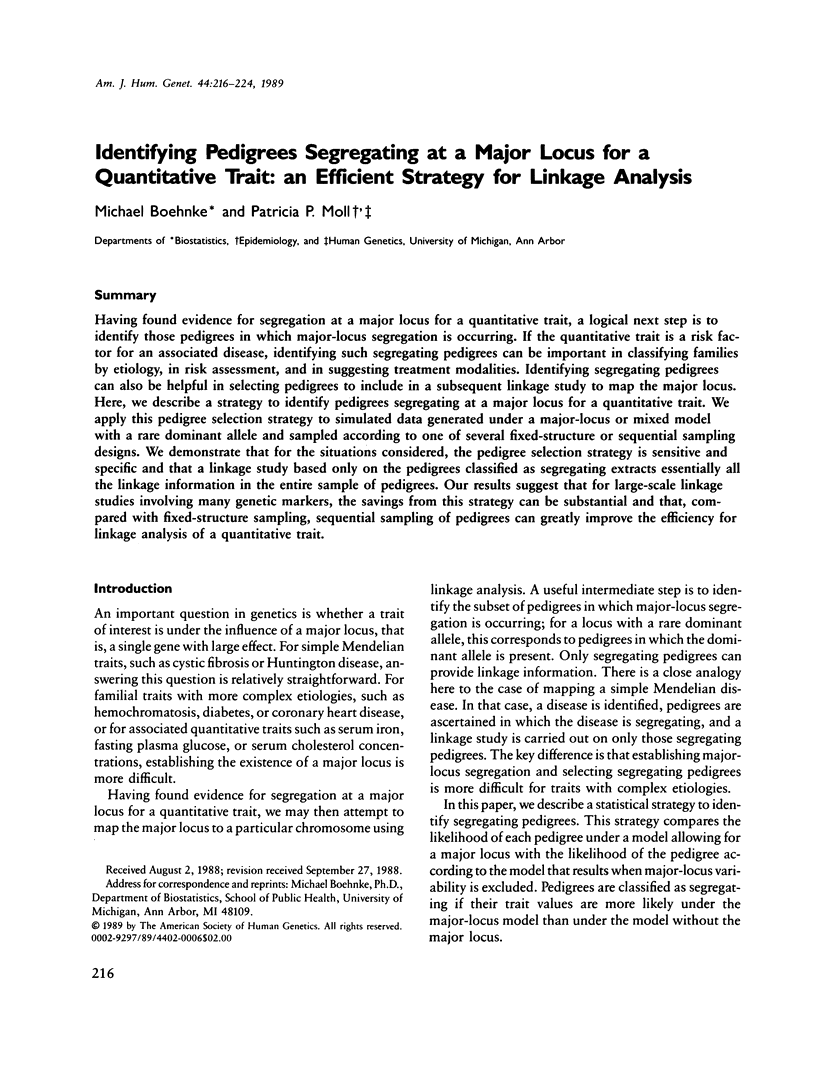
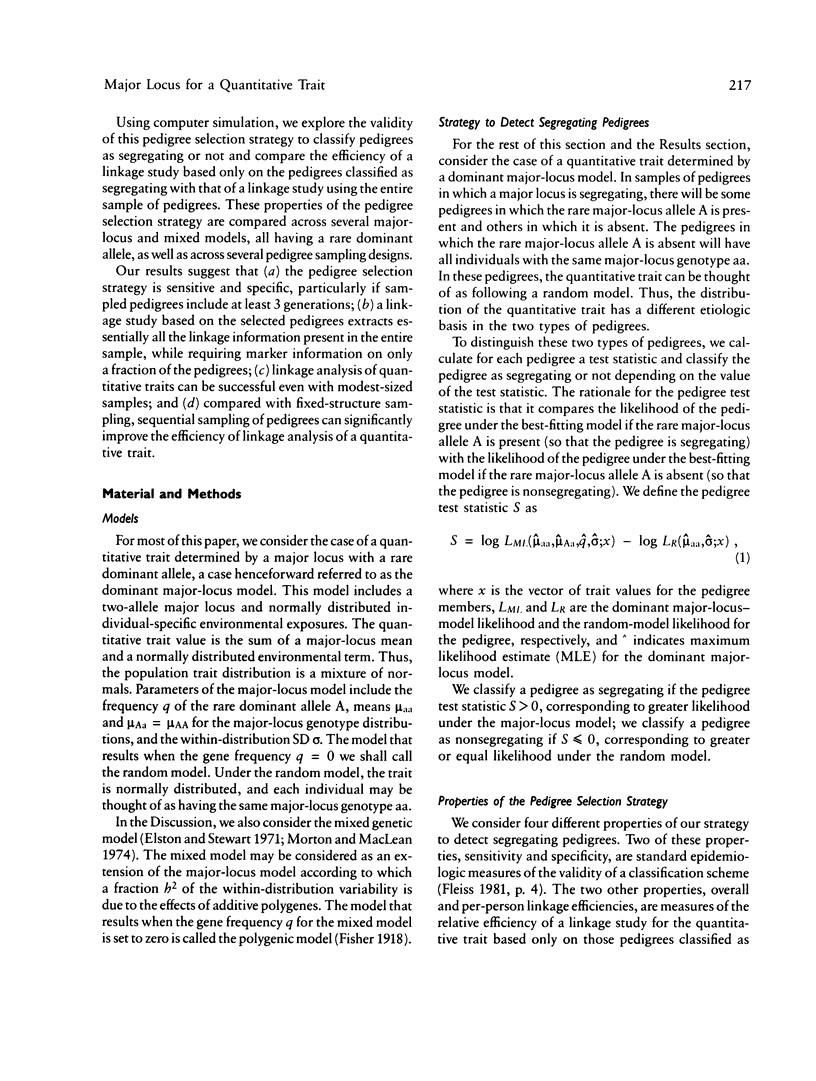
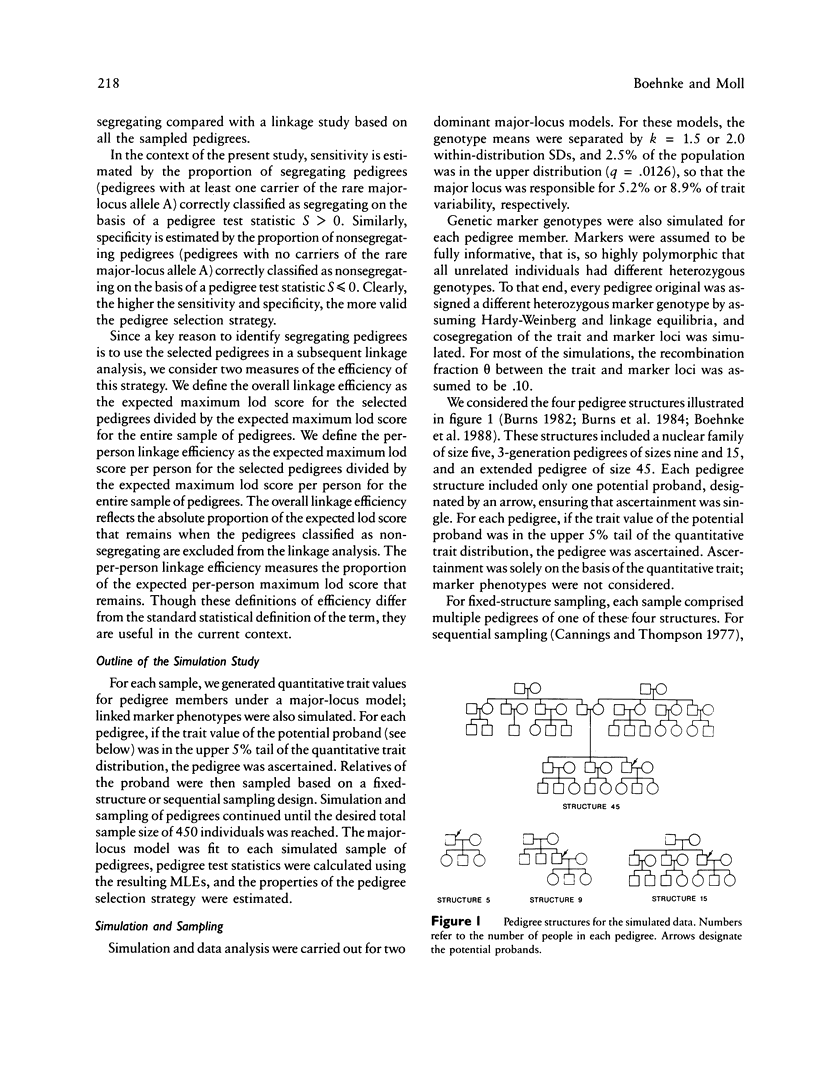
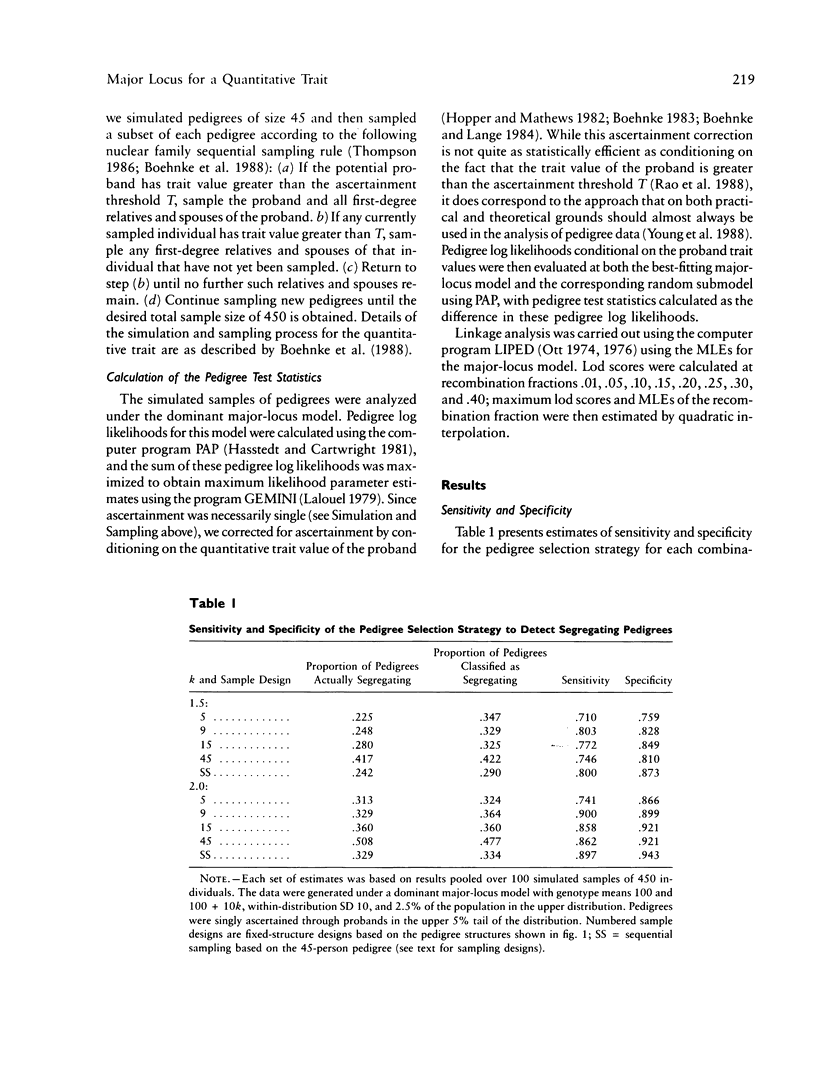
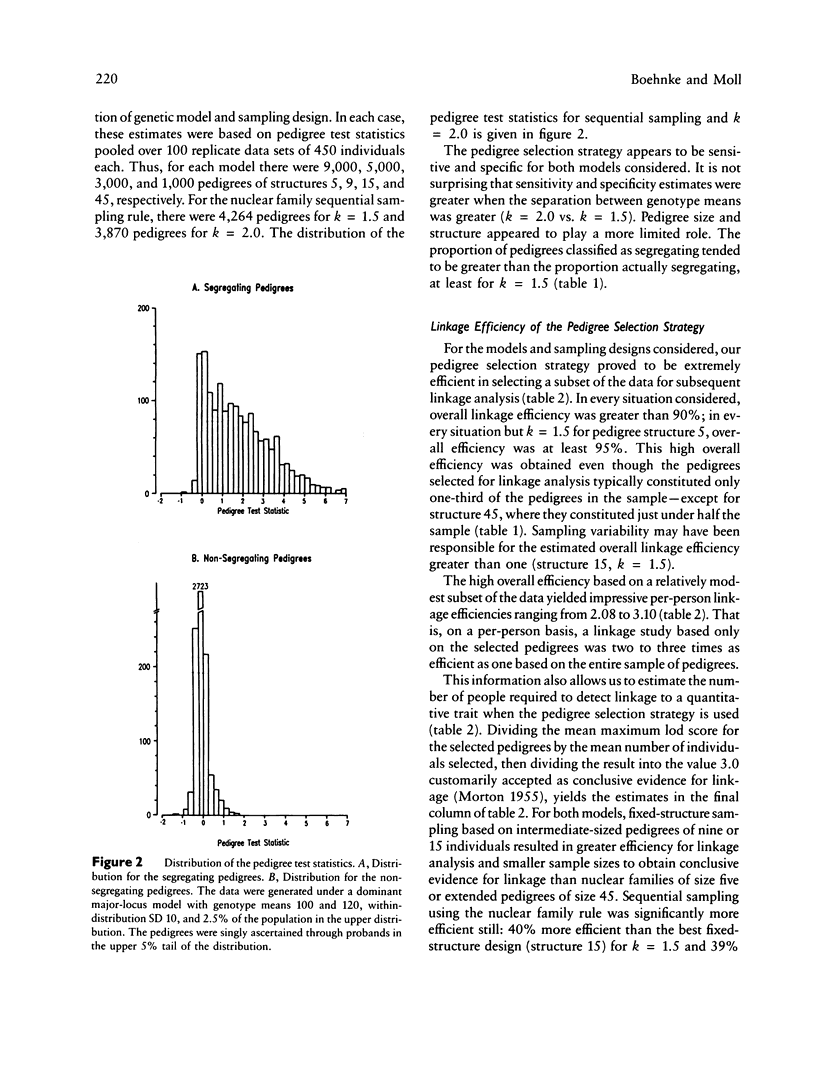
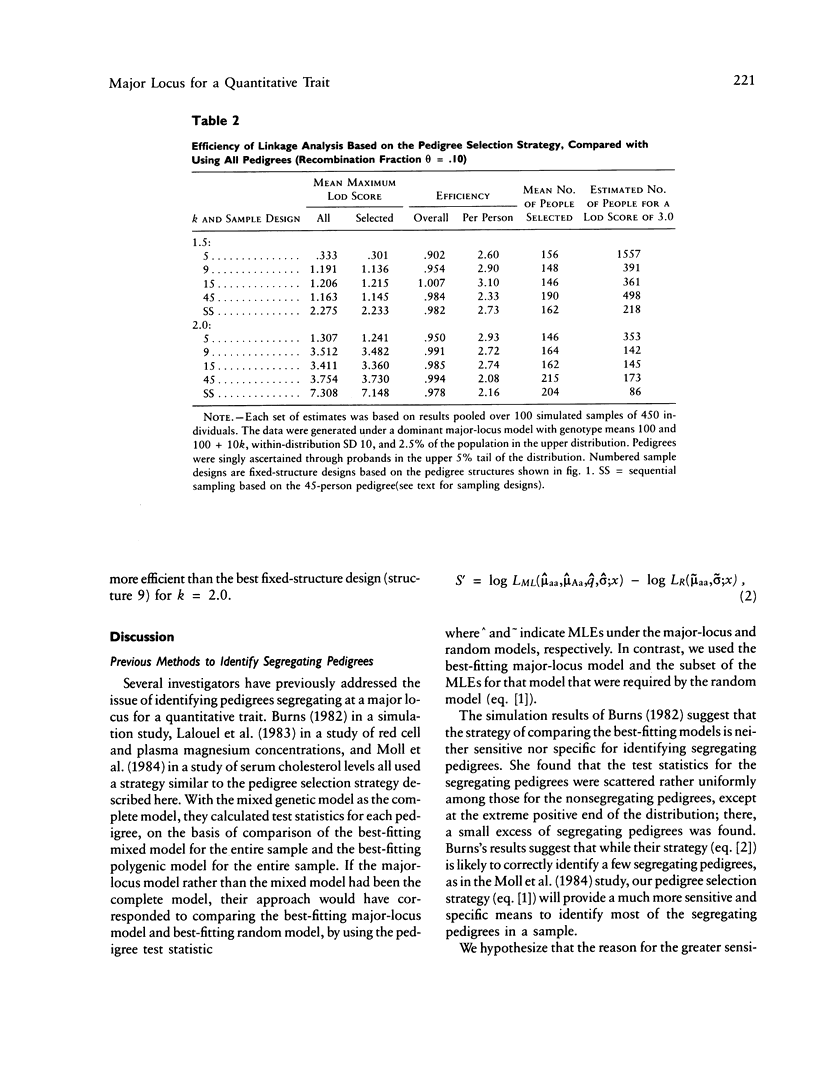
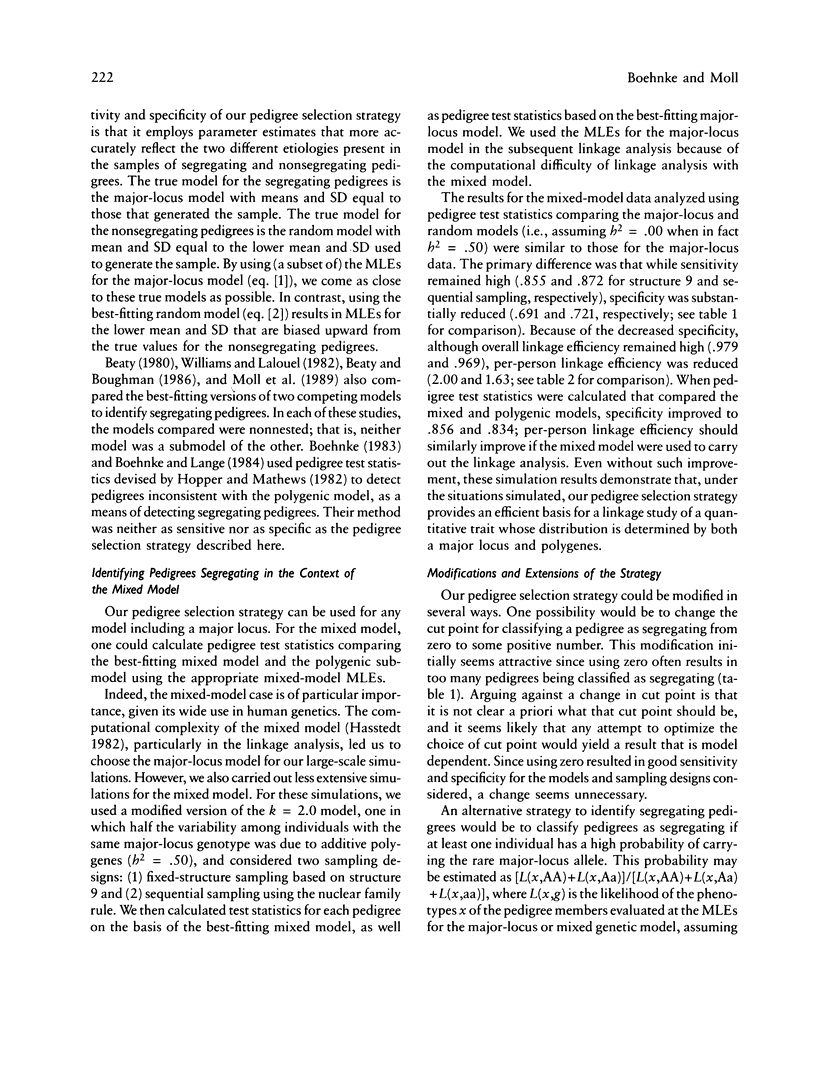
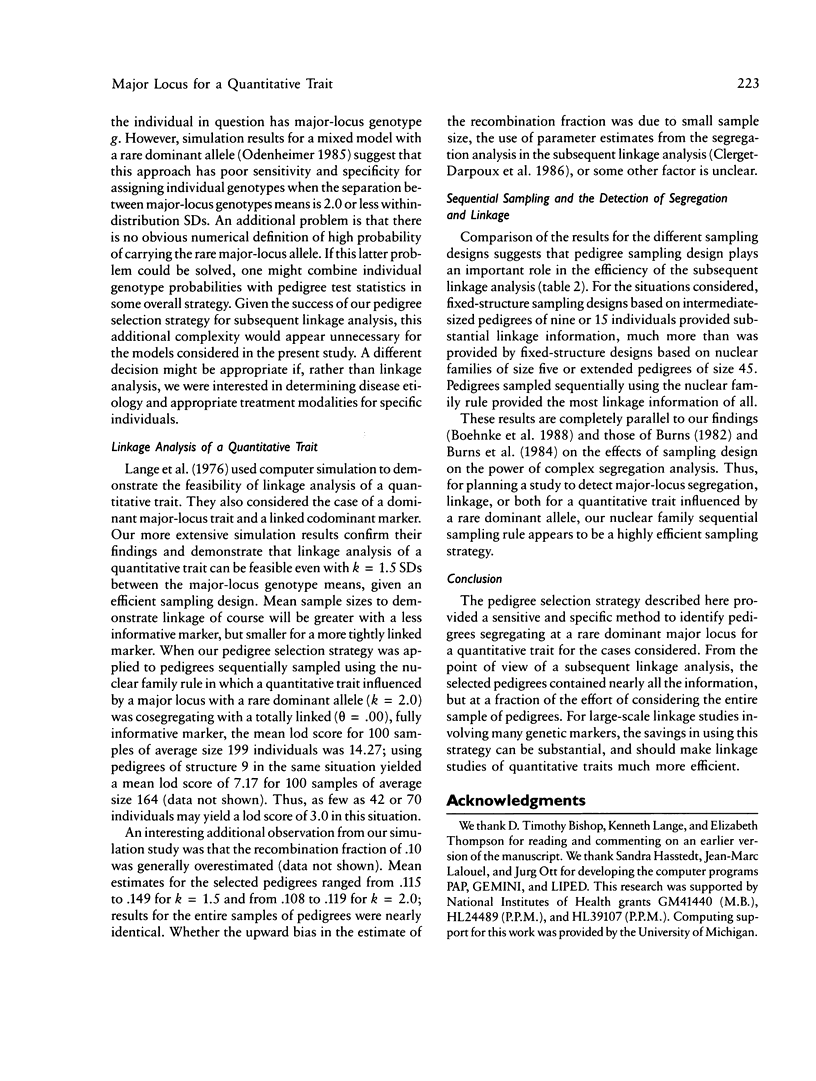
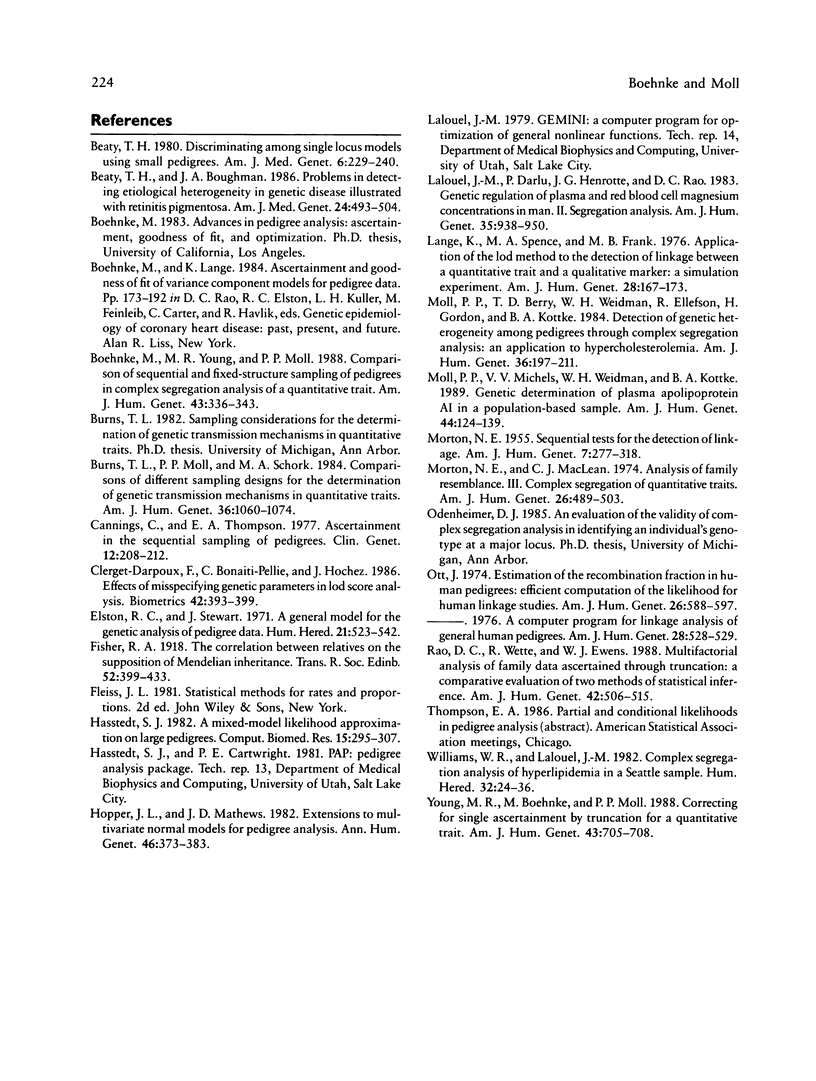
Selected References
These references are in PubMed. This may not be the complete list of references from this article.
- Beaty T. H., Boughman J. A. Problems in detecting etiological heterogeneity in genetic disease illustrated with retinitis pigmentosa. Am J Med Genet. 1986 Jul;24(3):493–504. doi: 10.1002/ajmg.1320240312. [DOI] [PubMed] [Google Scholar]
- Beaty T. H. Discriminating among single locus models using small pedigrees. Am J Med Genet. 1980;6(3):229–240. doi: 10.1002/ajmg.1320060307. [DOI] [PubMed] [Google Scholar]
- Boehnke M., Lange K. Ascertainment and goodness of fit of variance component models for pedigree data. Prog Clin Biol Res. 1984;147:173–192. [PubMed] [Google Scholar]
- Boehnke M., Young M. R., Moll P. P. Comparison of sequential and fixed-structure sampling of pedigrees in complex segregation analysis of a quantitative trait. Am J Hum Genet. 1988 Sep;43(3):336–343. [PMC free article] [PubMed] [Google Scholar]
- Burns T. L., Moll P. P., Schork M. A. Comparisons of different sampling designs for the determination of genetic transmission mechanisms in quantitative traits. Am J Hum Genet. 1984 Sep;36(5):1060–1074. [PMC free article] [PubMed] [Google Scholar]
- Cannings C., Thompson E. A. Ascertainment in the sequential sampling of pedigrees. Clin Genet. 1977 Oct;12(4):208–212. doi: 10.1111/j.1399-0004.1977.tb00928.x. [DOI] [PubMed] [Google Scholar]
- Clerget-Darpoux F., Bonaïti-Pellié C., Hochez J. Effects of misspecifying genetic parameters in lod score analysis. Biometrics. 1986 Jun;42(2):393–399. [PubMed] [Google Scholar]
- Elston R. C., Stewart J. A general model for the genetic analysis of pedigree data. Hum Hered. 1971;21(6):523–542. doi: 10.1159/000152448. [DOI] [PubMed] [Google Scholar]
- Hasstedt S. J. A mixed-model likelihood approximation on large pedigrees. Comput Biomed Res. 1982 Jun;15(3):295–307. doi: 10.1016/0010-4809(82)90064-7. [DOI] [PubMed] [Google Scholar]
- Hopper J. L., Mathews J. D. Extensions to multivariate normal models for pedigree analysis. Ann Hum Genet. 1982 Oct;46(Pt 4):373–383. doi: 10.1111/j.1469-1809.1982.tb01588.x. [DOI] [PubMed] [Google Scholar]
- Lalouel J. M., Darlu P., Henrotte J. G., Rao D. C. Genetic regulation of plasma and red blood cell magnesium concentration in man. II. Segregation analysis. Am J Hum Genet. 1983 Sep;35(5):938–950. [PMC free article] [PubMed] [Google Scholar]
- Lange K., Spence M. A., Frank M. B. Application of the lod method to the detection of linkage between a quantitative trait and a qualitative marker: a simulation experiment. Am J Hum Genet. 1976 Mar;28(2):167–173. [PMC free article] [PubMed] [Google Scholar]
- MORTON N. E. Sequential tests for the detection of linkage. Am J Hum Genet. 1955 Sep;7(3):277–318. [PMC free article] [PubMed] [Google Scholar]
- Moll P. P., Berry T. D., Weidman W. H., Ellefson R., Gordon H., Kottke B. A. Detection of genetic heterogeneity among pedigrees through complex segregation analysis: an application to hypercholesterolemia. Am J Hum Genet. 1984 Jan;36(1):197–211. [PMC free article] [PubMed] [Google Scholar]
- Moll P. P., Michels V. V., Weidman W. H., Kottke B. A. Genetic determination of plasma apolipoprotein AI in a population-based sample. Am J Hum Genet. 1989 Jan;44(1):124–139. [PMC free article] [PubMed] [Google Scholar]
- Morton N. E., MacLean C. J. Analysis of family resemblance. 3. Complex segregation of quantitative traits. Am J Hum Genet. 1974 Jul;26(4):489–503. [PMC free article] [PubMed] [Google Scholar]
- Ott J. Estimation of the recombination fraction in human pedigrees: efficient computation of the likelihood for human linkage studies. Am J Hum Genet. 1974 Sep;26(5):588–597. [PMC free article] [PubMed] [Google Scholar]
- Rao D. C., Wette R., Ewens W. J. Multifactorial analysis of family data ascertained through truncation: a comparative evaluation of two methods of statistical inference. Am J Hum Genet. 1988 Mar;42(3):506–515. [PMC free article] [PubMed] [Google Scholar]
- Williams W. R., Lalouel J. M. Complex segregation analysis of hyperlipidemia in a Seattle sample. Hum Hered. 1982;32(1):24–36. doi: 10.1159/000153254. [DOI] [PubMed] [Google Scholar]
- Young M. R., Boehnke M., Moll P. P. Correcting for single ascertainment by truncation for a quantitative trait. Am J Hum Genet. 1988 Nov;43(5):705–708. [PMC free article] [PubMed] [Google Scholar]


